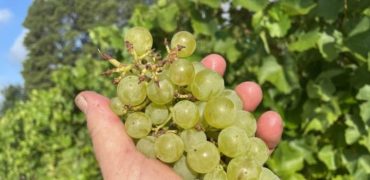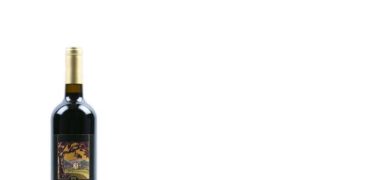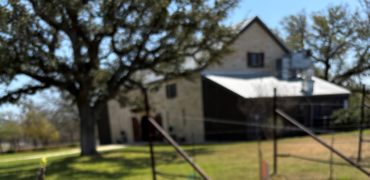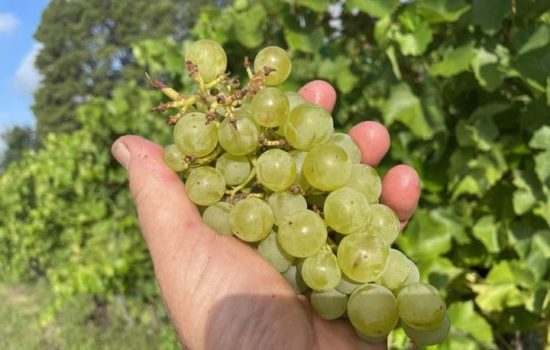The Texas grape crop is predicted to be meager. However, the grapes should be outstanding when harvested unless bad weather again enters the picture. Remember last February when we froze for several days? The grape vines suffered greatly. The grapes along the Gulf Coast were about to bud out when temperatures dipped into the teens and lower in several Gulf Coast areas. As a result, the Blanc Du Bois grapes’ primary buds were almost completely lost with secondary buds halfway wiped out and tertiary buds surviving. Grape vines have the three level system to provide a grape crop with primary buds providing the bulk of the grape crop. The secondary and tertiary buds are “back-ups” to the primary buds in case of bad weather. Texas had that bad weather so the grape production will come from the grapes’ back-up protection system. Blanc du Bois on a good year normally has compact, medium sized grape bunches. This year, the Blanc du Bois grape vines have smaller bunches. The second punch to the Blanc du Bois is our excessively wet and cool months of April, May, and the beginning part of June. This type of weather pattern promotes the growth of molds and fungi on the grape vines. Normally, organic Sulphur Fungicides are sprayed every other week during the months of May through harvest in July. If the weather is very wet, then weekly fungicide spraying is needed. With almost daily rains, the sprayed fungicides are washed off the vines before they could even work. As a result, this year’s crop of Blanc du Bois will be small at best.
The February freeze hit all parts of Texas, including the Texas High Plains. The grape vine buds were starting to form so most of the vine primary buds were lost. However, secondary and tertiary buds survived in many parts of the Texas High Plains. However, a man-made catastrophe called Diacamba reared its ugly head and wreaked havoc on many Texas High Plains vineyards. Diacamba is a super herbicide developed by Bayer to be an almost invincible weed killer in cotton fields. This herbicide is so strong that genetically modified cotton seed is needed for the cotton plans to survive the Diacamba aerial applications. The Texas High Plains is known for its constant winds so Diacamba can be carried via the wind for miles killing vineyards as far as ten miles away. The result is loss of grapes with long-term impacts of loss of vines. As a result 57 vineyard owners on the Texas High Plains filed a lawsuit in Jefferson County against Bayer for damages and to restrict the Diacamba applications. There are substitutes for weed prevention in cotton field besides Diacamba and includes less potent herbicides and periodic disking of soil to kill weeds. The Texas High Plains produces approximately 75% of Texas’ grape production. With Diacamba and the February freeze, the Texas High Plains grape production will be low.
When grape production decreases to around three tons or less per acre, the quality of the grapes increases. This is partially good news. The year 2021 was to have been a great year for Texas grapes and Texas wines. The State Legislature even passed Laws promoting labeling of wines made from Texas grapes. That is the irony of this year with challenges imposed by the weather and cotton farmers using Diacamba on the Texas High Plains.
June 25, 2021









